Filling large holes in hollow walls
When you need to fill a large hole in a hollow wall (stud wall), the problem is that you can’t just use some patch plaster as it will simply disappear inside the wall as soon as you apply it. It therefore becomes necessary to actually patch in a piece of plasterboard which may then be filled over the top to provide a smooth finish. The thickness of plasterboard does vary and it is normally either 9.5mm or 12.5mm thick. When patching a hole, try to use the same thickness that was originally used in the wall – if in doubt, go for the thinner option as you can always build up the plaster level to the surrounding area.
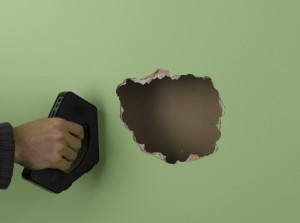 |
1. Use a cable, pipe and stud detector around the work area to help check that it is safe to cut through the plasterboard. |
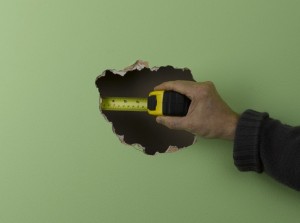 |
2. Locate the studs on either side of the damaged area by feeling into the hole, and measure the distance to the studs. |
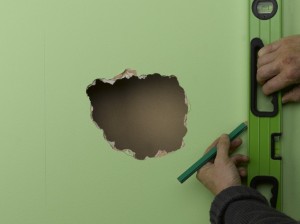 |
3. Draw vertical lines with a spirit level to mark the centre of each stud, extending the lines above and below the damaged area. |
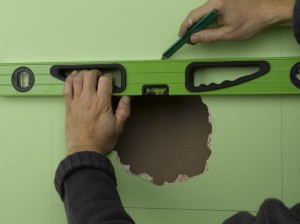 |
4. Use the spirit level once again to mark the horizontal lines to join the verticals, making a rectangle around the damaged area. |
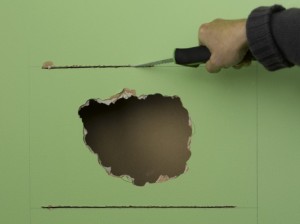 |
5. Cut away the rectangular area of wall with a drywall saw and a craft knife and remove the damaged section of plasterboard. |
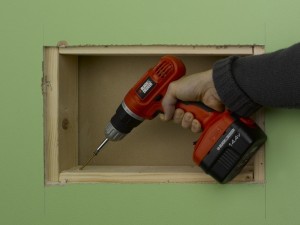 |
6. Attach noggings (horizontal wood supports) to the studs, one above and one below the hole, to make fixing points for the screws. |
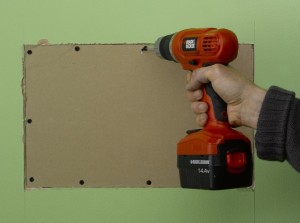 |
7. Measure and cut a section of plasterboard to fit the hole snugly, and fix it to the studs and noggings with drywall screws. |
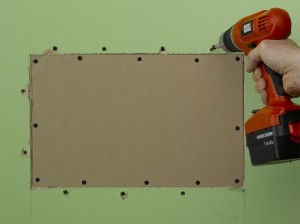 |
8. Fix the edges of the original plasterboard to the studs and noggings in just the same way, using drywall screws. |
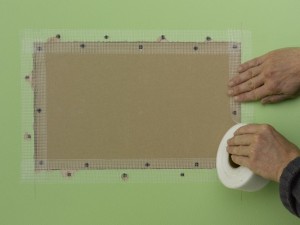 |
9. When all is secured, carefully tape along each of the edges of the rectangle with self-adhesive scrim, going right up to and over the corners. |
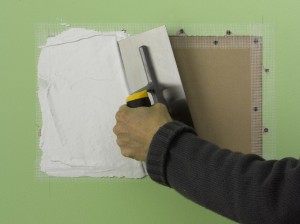 |
10. Plaster the surface of the repaired section of wall with finishing plaster, ensuring you cover all the scrim. Allow to dry and sand until smooth. |
Plasterboard hole repair tips
- This technique may also be used for patching a hole in a ceiling.
- You may need to apply two coats of plaster if the difference between the surrounding wall level and the new section of plasterboard is more than a few millimeters.
- Even if you don’t do a perfect plastering job, remember that you can fill any scratches or scrapes in your plaster surface using an all purpose filler, and filling knife. Once dry, sand smooth, and refill if necessary.
- For holes in solid, masonry walls, please see my guide – ‘Filling large holes in solid walls’.
